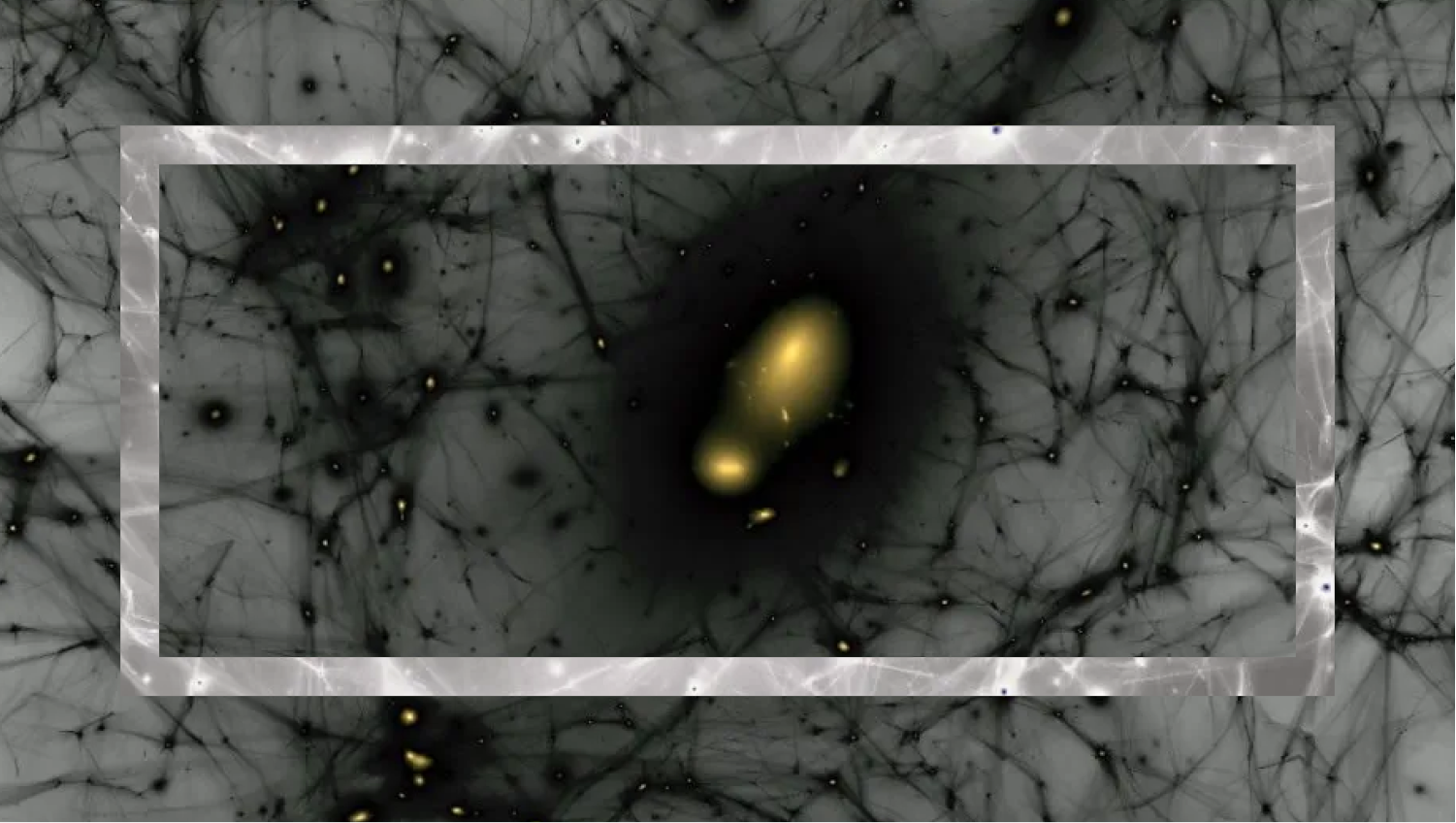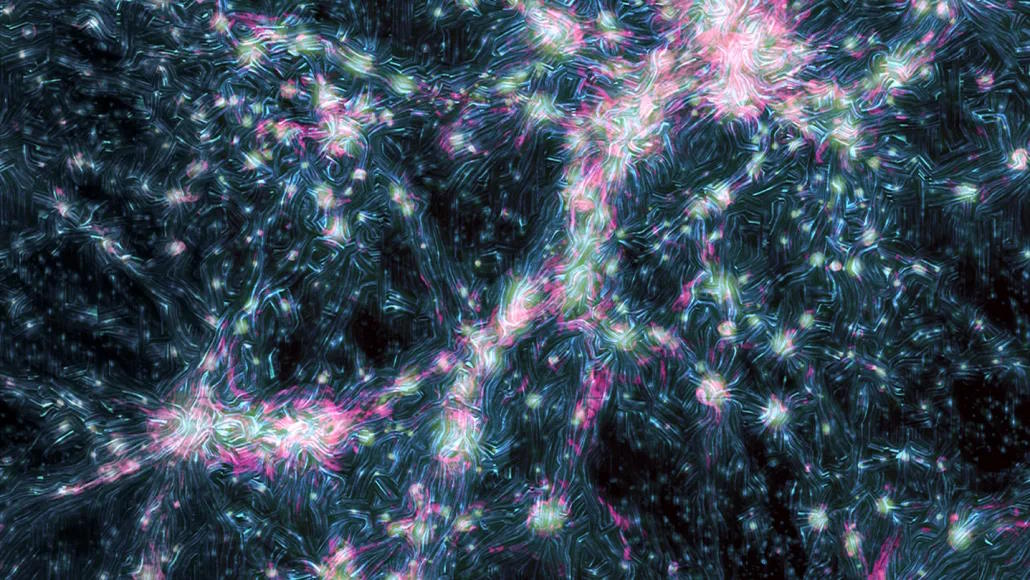Why we think there’s a Multiverse, not just our Universe
How our best physical understanding of the early stages of the Universe — that set up the hot Big Bang — inevitably leads us to conclude that there’s a lot more than what’s merely observable to us out there.
“Every true, eternal problem is an equally true, eternal fault; every answer an atonement, every realisation an improvement.” –Otto Weininger
The best measurements of the distant Universe — out beyond our galaxy — have led us to the current picture of exactly what our Universe is doing: expanding and cooling, with its galaxies progressively getting farther and farther apart.
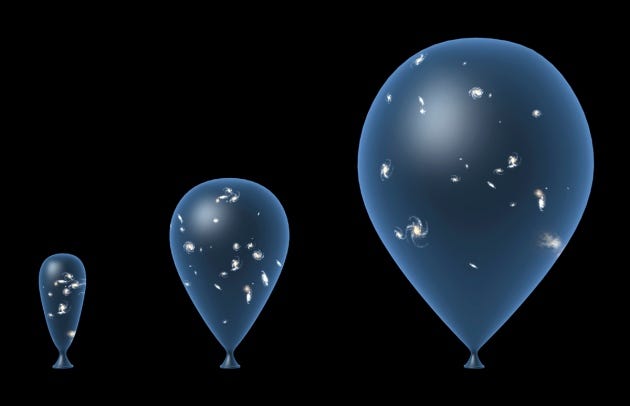
But what does that mean for our past?
If we’re expanding and cooling, that means our past was less expanded and less cooled, or as we like to think of it, denser and hotter.

Now, if you’re thinking like a scientist, you don’t just want to know what it’s doing. You also want to know — if it’s expanding — both what’s causing the expansion, and by how much it’s expanding. In other words, we’d like to determine the rate of expansion.
We can do this observationally in a very simple fashion, but the answer is actually straightforward theoretically: if general relativity is your theory of gravity, the Universe’s expansion rate is determined by what type of energy dominates your Universe.
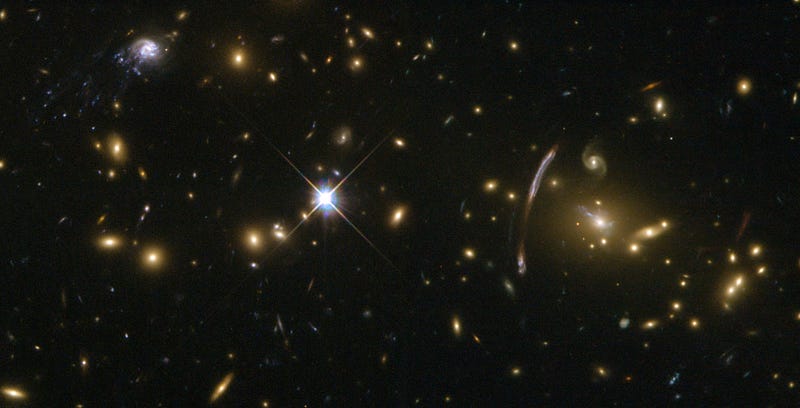
For the majority of our cosmic history, while the Universe has been filled with galaxies, stars, planets, and all the objects we’ve ever discovered, the Universe spent most of its time dominated by matter, both normal and dark. (Not counting the very recent onset of dark energy dominance, which does nothing to change the early story.)
And when you have a Universe dominated by matter, here’s how it expands.
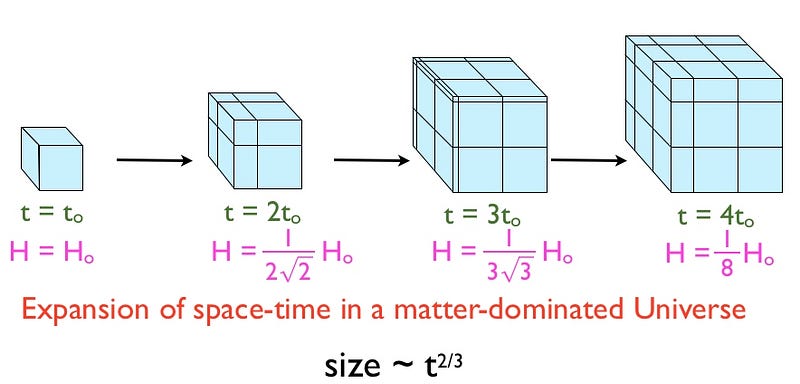
Note that the expansion rate, H, drops over time. This means the Universe was hotter, denser, and expanding faster in the past.
There’s another thing that happens, and it’s obvious if you think about it. If the Universe was hotter in the past, that means the radiation in the Universe was more energetic, due to the fact that its wavelength was smaller!
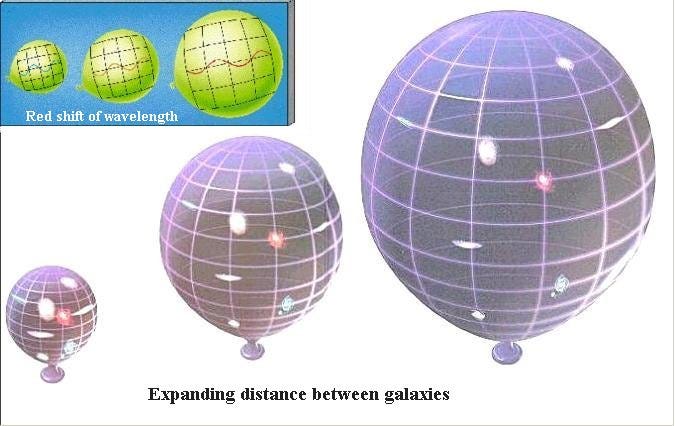
So if we go back far enough, because the Universe was hotter and denser, at some point it will have been too hot to form neutral atoms! And if we continue to extrapolate backwards, the energy density from radiation will eventually overtake that due to matter. And that causes the Universe to expand differently! How does a Universe dominated by radiation expand?
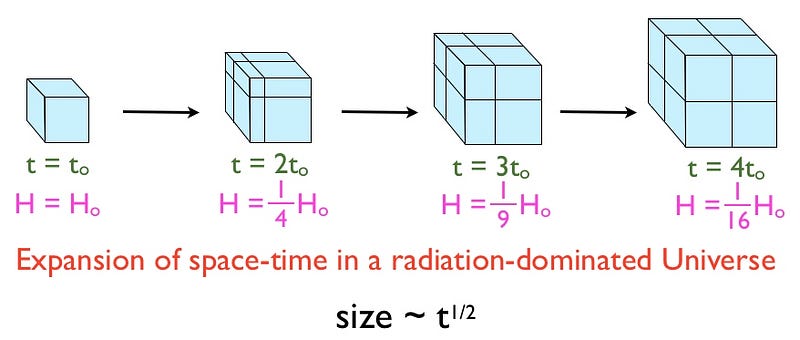
It expands similar to matter — in the qualitative sense — as the numbers work out only a little differently. But we can’t go back to arbitrarily high temperatures, or all the way back to a singularity; there’s a limit as to how hot the Universe was in its past, as constraints from the Cosmic Microwave Background tell us.

So what came before the earliest stages of what we know as “the Big Bang”? What came before our hot, dense, full-of-matter-and-radiation Universe?
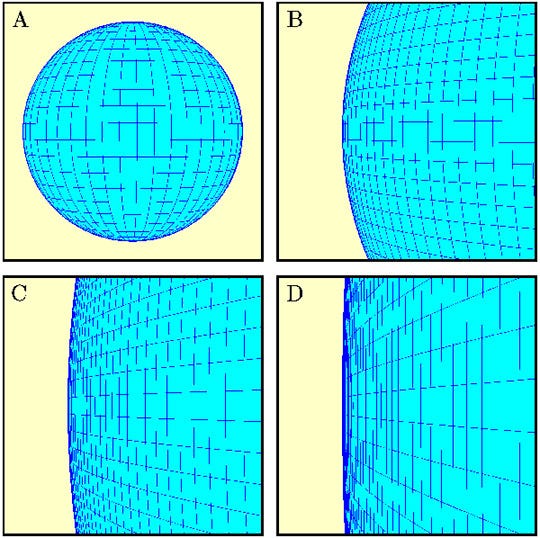
As best as we can tell, there was a period where the Universe was inflating. Stretching it flat and giving it uniform properties everywhere, cosmic inflation sets up the initial conditions that lead to the Universe we observe today.
Rather than being populated with matter or radiation, the Universe could also be dominated by vacuum energy. (After all, the energy of empty space doesn’t have to be zero, and in fact, isn’t even zero today!)
When a Universe is dominated by vacuum energy, its expansion history looks very different. Let’s take a look…
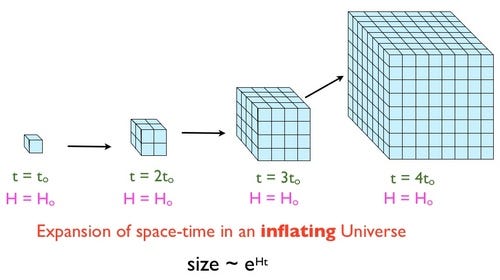
Notice how the expansion rate doesn’t drop over time! This means that instead of growing like some power-law of time, the Universe inflates exponentially, and in very short order can stretch itself to be not only larger than you can fathom, but googols of times larger than the entire observable Universe!
Now, you might want to know how big the unobservable Universe is. That is, there are very likely parts of the Universe that are more than 46.1 billion light years from us; we simply can’t see the light from them!
So what determines how much the Universe inflates? Let’s take a look at the standard picture of inflation.
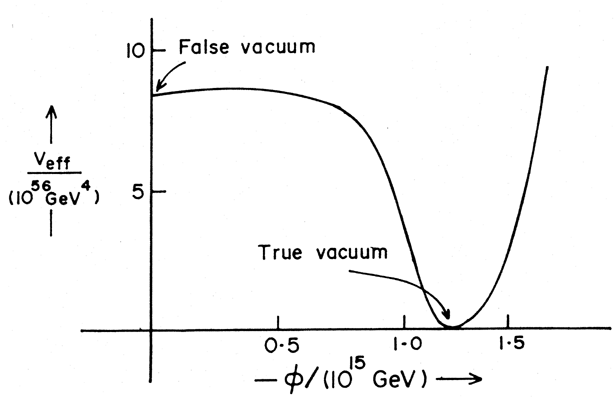
The y-axis here represents energy. That is, in particular, the amount of vacuum energy intrinsic to space. Obviously, the amount of vacuum energy in space today is tiny: some 28 orders of magnitude less than we think it was during inflation!
If we want the Universe to inflate a large enough amount to account for the flat, roughly uniform Universe we observe today, we need it to remain in this inflating state for a long enough amount of time. As far as our graph above goes, that means we need to start out on the flat part of this curve.
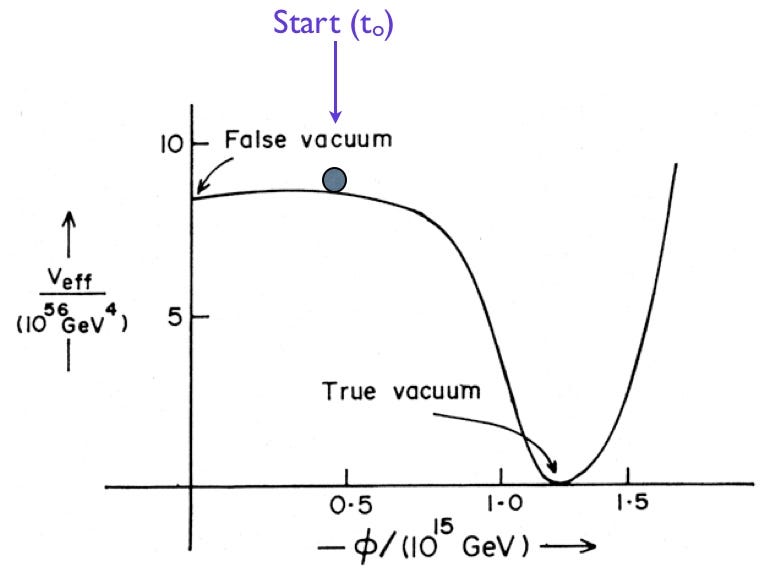
So long as we can roll or slide slowly enough down this curve, we’ll get enough inflation to produce our Universe. At some later time, you’d expect we’d eventually start to slide closer towards that valley.
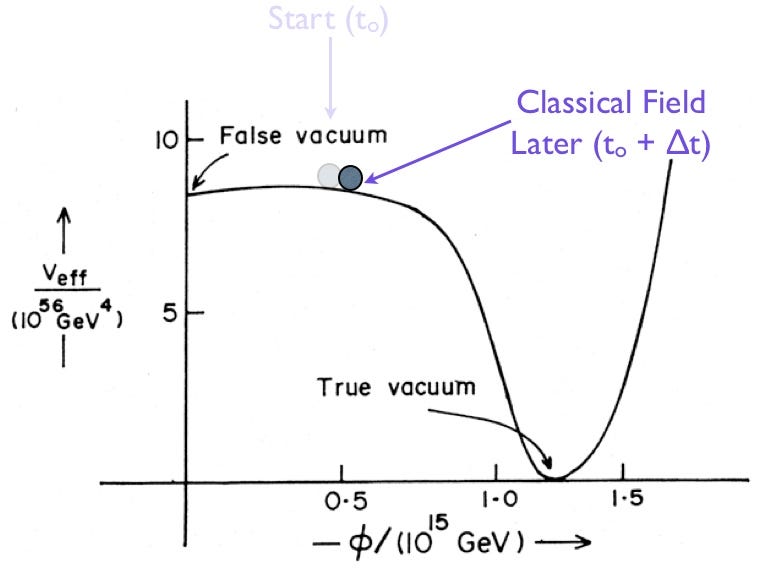
And eventually, we’d fall in. That part of it, where we fall into that valley, is where this vacuum energy gets dumped into matter, radiation, and all the stuff that produces the hot big bang that gave rise to our Universe. And, if the idea of inflation is correct, this certainly happened in our region of the Universe; moreover, it happened about 13.8 billion years ago.
But you’ve got to remember, this field that causes inflation — whatever it’s true nature is — is likely to be a quantum field/particle, like everything else in the Universe.
Now, what happens to an electron — a well-studied quantum particle — in something we can study, like a simple atom? Well, you can measure it, and know where starts out at some given time. But give it a while.
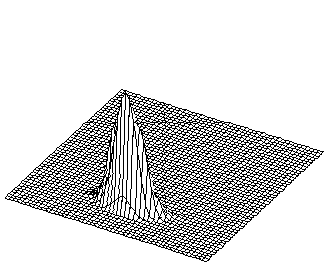
If it’s a quantum particle, its wavefunction spreads out over time, freely occupying a superposition of whatever states it’s allowed to.
So, how does this apply to our inflationary field above? When we allow it to spread out over time, what do we get?
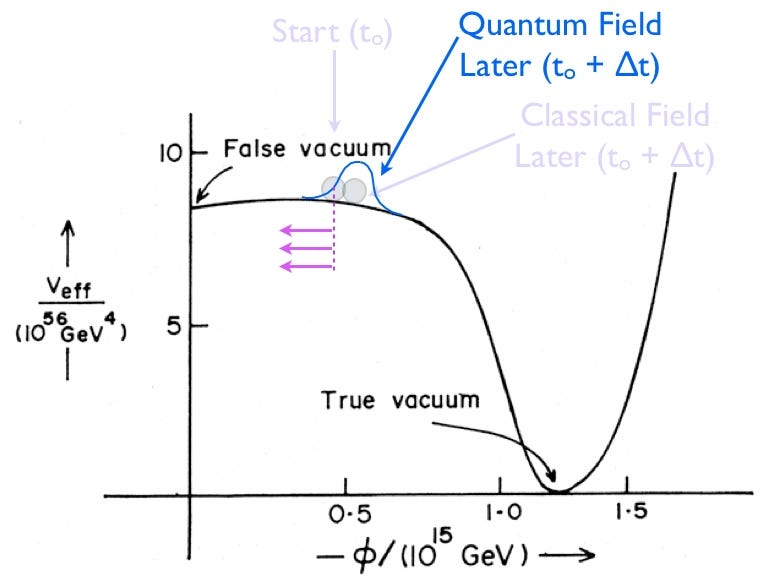
We get that part of this quantum field, if it’s rolling slowly enough, actually spreads out back past where it started, up towards a state where it will continue to inflate! So, remember our classical inflation picture, that we showed you, above?

In this picture, inflation happens for some time, and then it ends everywhere, all at once.
But if we allow inflation to be a quantum field instead — and of course it must be one — you have to calculate how quickly it spreads vs. how much the Universe inflates vs. how quickly it rolls down the hill. If it rolls down the hill too quickly, or it inflates too slowly, it won’t have enough time to spread out in enough regions of the Universe. But if it rolls slowly enough, inflates fast enough, and spreads out sufficiently quickly, what do we get?
We’ll start with an inflating region, shown in blue. If the potential rolls sufficiently close to the valley, inflation will end, and we can mark it with a red X. But if it continues to inflate, we’ll leave it blue, and generate more inflating spacetime before we check in on it again. And here’s what we find.
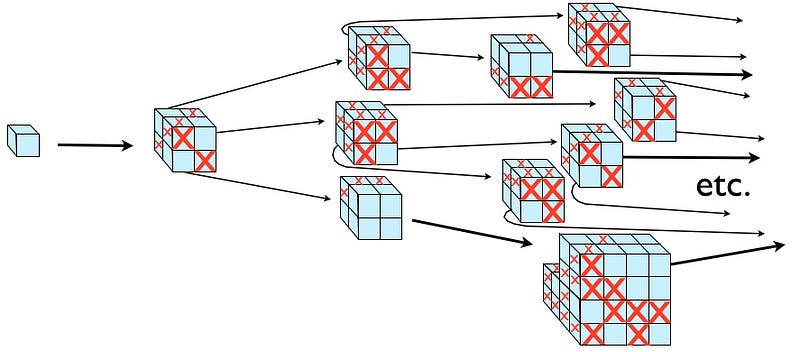
Although inflation will end in more than 50% of the Universe at any given time, enough of the quantum field that dictates its behavior will undergo quantum “spreading” back towards the exponentially stable expansion state so that inflation lasts an eternity. And this is true for every model of slow-roll inflation we’ve concocted!
In other words, there are regions of the Universe where it inflated in the past, that false-vacuum energy got turned into radiation and matter, and those parts of the Universe had a history very much like our own. But in between those regions, there are other parts that keep on inflating, and so on, and so on, and so on…
And that’s why there’s a multiverse, and not just our Universe!
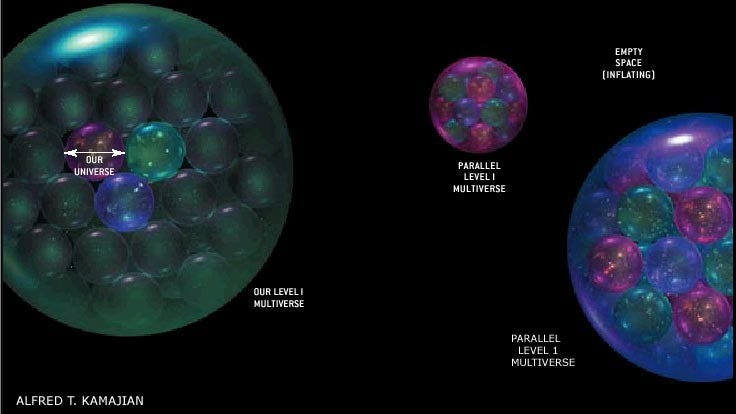
Now, the story I’ve told you is a conservative one. In this version of the story, the fundamental constants are the same in all the different regions of the multiverse, and the other Universes have the same laws of physics — with the same quantum vacuum and all — as our own. But most of what you hear about the multiverse these days are from people who have speculated much farther than that.
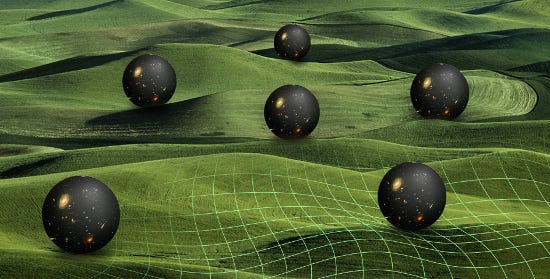
The ideas that you hear — multiple false vacua, the landscape, connections to quantum gravity, etc. — are ones that people have speculated upon in recent years. These are mostly driven by including connections to string theory, and they present a whole host of difficulties as well as a great many interesting avenues to investigate. I will not touch upon them here, but when you hear those words, this is the basic story that they all take for granted.
So this basic concept, while it likely isn’t the entire story, is just simple quantum physics applied to our best working model of the Early Universe. And what we get out of it is a Universe that, in most regions of it, isn’t filled with matter-and-radiation at all, but that will continue to inflate for all eternity: our Multiverse.
An earlier version of this post originally appeared on the old Starts With A Bang blog at Scienceblogs.



